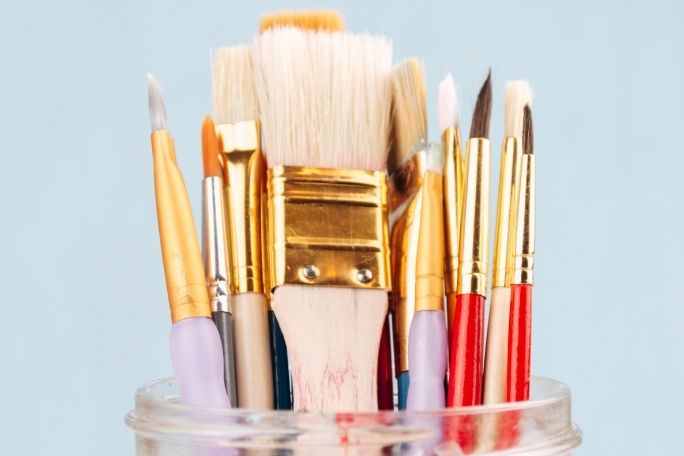Lesson summary
In this activity students capture the ‘signatures’ of natural objects at their school – such as trees and flowers – by dipping the branches of trees or petals of flowers into paint and leaving the wind to brush the branches or petals against paper. Students then display these artworks in an exhibition designed to engage the audience in the subject of ‘saving local biodiversity’.
Learning intentions:
Students will...
- experiment with developing and applying techniques when capturing art from natural objects
- consider how to display artworks in an exhibition
- understand the role that natural objects play in their local environment.
Lesson guides and printables
Lesson details
Curriculum mapping
Australian curriculum content descriptions:
Years 5 & 6 Visual Arts:
- Develop and apply techniques and processes when making their artworks (ACAVAM115)
- Plan the display of artworks to enhance their meaning for an audience (ACAVAM116)
Year 5 Science:
- Living things have structural features and adaptations that help them to survive in their environment (ACSSU043)
Year 6 Science:
- The growth and survival of living things are affected by the physical conditions of their environment (ACSSU094)
Syllabus Outcomes: ST3-10LW, ST3-11LW.
Time required: 2 x 48 mins
Level of teacher scaffolding: Medium – facilitate discussion and overseen activity.
Resources required
- Paper
- Paints
- Space and materials for exhibiting artwork, camera (optional)
Additional info
This is an original Cool.org lesson. Facts and figures in these lessons may have changed since this lesson was published. We always endeavour to update our resources in a timely manner, but if you see an error or issue in our resources please get in touch with us.


Welcome back!
Don't have an account yet?
Log in with:
By signing up to Cool.org you consent and agree to Cool's privacy policy to
store, manage and process your personal information. To read more, please see
our privacy policy here(Opens in new tab).
Create your free Cool.org account.
Many of our resources are free, with an option to upgrade to Cool+ for premium content.
Already have an account?
Sign up with:
By signing up to Cool.org you consent and agree to Cool's privacy policy to
store, manage and process your personal information. To read more, please see
our privacy policy here(Opens in new tab).